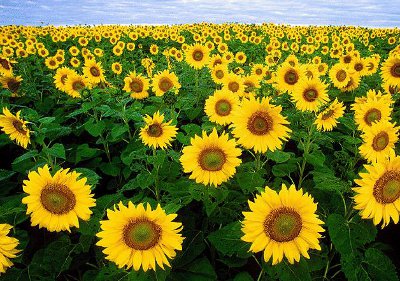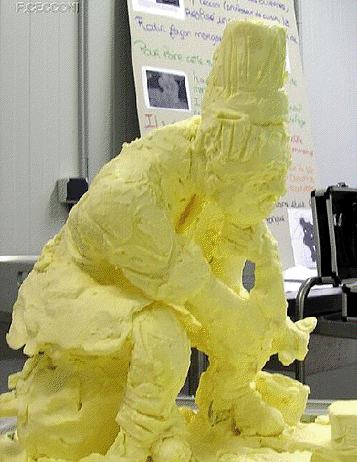Oils and fats have similar compositions, but oils are liquid at room temperature and fats are partially solid. They both contain esters derived from propane-1,2,3-triol (glycerol) and carboxylic (often called fatty) acids, known as triglycerides.
In the body, fats provide a concentrated energy source and are broken down and modified to supply the carboxylic (fatty) acids necessary for health. Fats also act as carriers for the vitamins A, D, E and K which are soluble in fats and not in water, and vitamins B and C which are water soluble.
The fatty acids found in natural fats are generally straight chain compounds and can be saturated or unsaturated. For example, saturated acids found naturally include:
.jpg)
However, the most commonly occurring of all fatty acids are unsaturated, for example:
.jpg)
Some of the fatty acids needed by the body cannot be produced by the body's metabolism and must come directly from the diet. These are known as essential fatty acids. The most well known are omega-3 and omega-6 acids, so named by the position of the first carbon-carbon double bond, counting from the terminal methyl group (the omega (co) carbon atom).
Examples are:
.jpg)
Chemical processes are used to convert mixtures of naturally occurring oils and fats into margarine and other spreads that are used as substitutes for butter. The major vegetable oils used are palm, sunflower, rapeseed and soya bean oils.
Margarine
Margarines are based on blends of oils and fats, the proportions varying between products. The composition of margarine is controlled by law. In the UK it must contain between 80-90% fat and must also contain 800-1000 mg of Vitamin A and 7.05-8.05 mg of Vitamin D per 100 g of margarine.
Margarine contains:
- oils and fats, not more than 10% being butter fat
- an aqueous phase which consists of either skimmed milk or whey; the milk may or may not be cultured
- salt
- flavouring
- vitamins
- colour, e.g. p-carotene
- emulsifiers such as lecithin and mono- and di-glycerides
Soft margarines have a higher proportion of liquid fats which contain esters of unsaturated fatty acids, whilst hard margarines have a higher proportion of esters of saturated fatty acids which are solid at room temperature.
Spreads
Spreads contain less oil and fat than margarine, but otherwise may contain similar ingredients with proportionately more water. In addition, small amounts of stabilizers and thickening agents may be used.
Manufacture
Margarine and spread production involves combinations of the following processes:
- refining the oils and fats
- hardening (i.e. hydrogenation of oils)
- transesterification
- blending of the oils and fats
- emulsification of the oils and fats with the aqueous phase and other ingredients
Refining the oils and fats
Individual oils are refined separately prior to being mixed.
Pure, light-coloured, odourless and bland-tasting oils are produced by removing minor fat-soluble and fat-insoluble products. Insolubles are removed by extraction in water (or dilute sodium chloride solution).
Solubles - largely free fatty acids - are neutralized by reaction with aqueous sodium hydroxide. Colour is removed by filtration through activated Fuller's Earth or other adsorbents.
Hardening (Hydrogenation of oils)
Some unsaturated oils have a low melting point, and if a higher melting point is needed, the oils are hydrogenated in a batch reactor. Hydrogen reacts with the unsaturated bonds in the presence of a catalyst, usually finely divided nickel supported on silica at about 430 K:
.jpg)
Transesterification
Transesterification modifies the crystalline properties of the fat, and is another process for raising the melting point. It can take place prior to hydrogenation, or after some hardening.
Transesterification allows the exchange of the carboxylate groups in other esters. The carboxylate groups exchange either within the ester molecule (intramolecular exchange) or between different ester molecules (intermolecular exchange), for example:
.jpg)
The fat is heated at about 370-400 K in the presence of sodium hydroxide, propane-1,2,3-triol (glycerol) and a small amount of sodium methoxide or ethoxide, which acts as a catalyst.
.jpg)
The fat is heated at about 370-400 K in the presence of sodium hydroxide, propane-1,2,3-triol (glycerol) and a small amount of sodium methoxide or ethoxide, which acts as a catalyst.
|
Figure 1 Sunflowers in Fargo, North Dakota, US.
|
 |
|
Figure 2 Much sunflower oil is used to make margarine. This photo shows an unusual use of the foodstuff, Un sculpture en margarine d'un cuisinier penseur (A sculpture in margarine of a Thinking Cook). The sculpture was no doubt inspired by Rodin.
|
 |
Blending of the oils and fats
Margarines are mixtures of the saturated esters which form crystalline solids at room temperature, and unsaturated esters which remain as liquids. The exact proportion of the fats and oils, blended together, depends on the climatic conditions and the end-use. Often the more favoured is the softer margarine which contains more of the unsaturated esters.
The blending may take place immediately after refining, after hardening or after the esterification depending on the physical properties required of the product.
Emulsification with the addition of milk, vitamins and colour
In the final part of the process, vitamins, flavourings, colour and emulsifiers are added to the blended oil and then mixed together with the water, milk, whey and salt. The mixing is controlled (at ca 330 K) to produce an oil-in-water emulsion with a droplet size typically in the range 5-10 urn. The mixture is pasteurized at temperatures of ca 350 K. Finally the emulsion is chilled in a vessel, with further mixing to control the size of the fat crystals that are formed.
Date last amended: 18th March 2013
